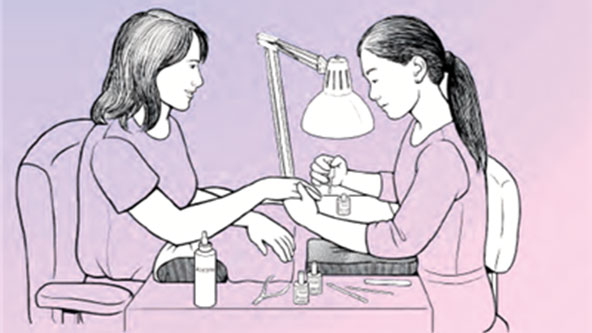You may not have heard of toluene, but you’ve almost certainly encountered household products that contain this potentially harmful chemical.
Toluene & Its Chemical Uses
Toluene is a colorless, water-insoluble liquid with a sweet, pungent odor. This chemical (previously known as toluol) can be produced industrially or in a laboratory, and it also appears in small levels naturally in crude oil. Toluene is largely used for the industrial production of benzene, a common chemical which is used to make plastic and synthetic materials. Toluene itself is used in a variety of applications, including:
- Paint and paint thinners
- Aviation gasoline
- Medication
- Detergents
- Fingernail polish
- Spot removers
- Lacquers and adhesives
- Rubber
- Antifreeze
- Printing ink
Safety Hazards Associated with Toluene
Toluene is a highly flammable liquid and it can cause mild damage to the skin and the eyes. However, the most-common hazard associated with this chemical is inhalation. Products containing toluene can produce dangerous fumes which can cause nausea, headaches, unconsciousness, and even death if inhaled. You can be exposed to toluene when using products that contain it – for instance, when pumping gasoline or painting a room. Prolonged or repeated exposure to toluene vapors can cause severe damage to the central nervous system. Taking the necessary precautions when handling toluene or toluene products is essential.
How to Handle Toluene Safely
When using toluene, ventilation is one of the most important safety precautions you can take. Whether you handle toluene at work or use products like paint or lacquers in your home, always be sure the area is properly ventilated to avoid accidental inhalation of toluene vapors. In the event of insufficient ventilation, wear suitable respiratory equipment. Protective clothing may also be necessary. Avoid contact with the skin and eyes, and never use toluene near sources of heat or ignition.
If using a household product that contains toluene, be sure to follow any additional safety instructions listed on the product label.
Care for Toluene Exposure
Toluene can be accidentally inhaled or ingested, and if you work with this chemical it can also come into contact with your skin or eyes. In the case of any type of exposure to toluene, it is important that it be managed appropriately in order to minimize hazards to your health.
Skin Contact – Immediately flush skin with plenty of water, and cover the irritated skin with an anti-bacterial cream. Seek medical attention.
Eye Contact – Immediately flush eyes with plenty of water for at least 15 minutes, removing contacts if present. Seek medical attention.
Ingestion – Do not induce vomiting. Call a medical professional immediately, especially if large amounts of this chemical were swallowed.
Inhalation – Seek fresh air immediately. Administer oxygen if breathing is labored, and use artificial respiration if not breathing. Seek medical attention.
Proper Toluene Storage & Disposal
It is important to keep toluene away from sources of heat or ignition. This chemical should be stored in a tightly closed container in a dry, well-ventilated, and secure place, preferably one designed for the storage of flammable liquids. Toluene should be kept away from incompatible materials, like oxidizing agents.
Get Toluene MSDS Safety Information
Whether you use toluene at work or in household products, safety is of the utmost importance when handling this hazardous chemical. For more information about toluene uses, safety, or disposal, search our database of MSDS information.
